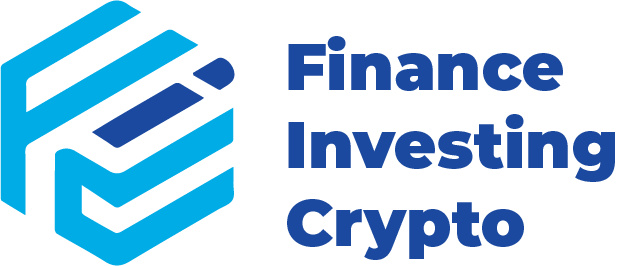“`html
Understanding Loan Types: Personal, Auto, Mortgage, and Beyond
Introduction: Why Knowing Different Loan Types Matters
In today’s financial landscape, loans are essential tools for achieving personal goals—buying a home, financing a vehicle, or covering unexpected expenses. But with a multitude of loan options available, understanding their differences, benefits, and potential pitfalls is crucial for making informed decisions. Whether you’re a first-time borrower or looking to optimize your current financial strategy, knowing the various loan types enables you to choose the most suitable solution for your circumstances.
Why Is Distinguishing Loan Types Important?
Selecting the right loan impacts your financial health, interest costs, repayment terms, and long-term stability. Misunderstanding or choosing an inappropriate loan can lead to higher payments, increased debt burden, or missed opportunities for financial growth. Furthermore, understanding loan types enhances your ability to negotiate better terms and avoid common pitfalls such as predatory lending or excessive interest.
Benefits of Knowing Different Loan Types
- Informed decision-making: Select loans that align with your financial capacity and goals.
- Cost savings: Understand which loans have lower interest rates or favorable repayment terms.
- Risk management: Recognize the implications of secured versus unsecured loans.
- Improved credit management: Maintain a healthy credit profile by choosing appropriate loan types and repayment strategies.
1. Major Types of Personal Loans
Unsecured Personal Loans
Overview:
Unsecured personal loans are loans granted without collateral—meaning no assets are pledged as security. They are typically used for consolidating debt, funding large purchases, or covering emergency expenses.
Features:
- Higher interest rates compared to secured loans
- Fixed or variable repayment terms
- Quick approval processes
Example:
Suppose Sarah needs $10,000 for home renovations. She applies for an unsecured personal loan with a 5-year term, paying a higher rate that reflects the absence of collateral.
How to Apply:
- Check your credit scores and financial health
- Compare offers from multiple lenders
- Prepare necessary documents like proof of income, ID, and expenses
Secured Personal Loans
Overview:
These loans are backed by collateral, such as savings accounts or assets. Collateral reduces lender risk, often resulting in lower interest rates.
Features:
- Lower interest rates
- Larger loan amounts possible
- Longer repayment periods
Example:
James secures a personal loan using his savings account as collateral to fund a wedding, enjoying lower interest costs.
Considerations:
- Risk of losing collateral if loan payments are missed
- Requires proper valuation of assets
2. Auto Loans: Financing Your Vehicle
Overview
Auto loans are loans specifically designed for purchasing a vehicle, either new or used. They are traditionally secured loans, with the vehicle itself serving as collateral.
Features:
- Fixed interest rates
- Loan terms typically ranging from 36 to 72 months
- Down payment often required
Practical Tips:
- Shop around for the best interest rate
- Check your credit score beforehand
- Consider the total cost, including taxes and fees
Example:
Mike wants to buy a $25,000 car. By securing a 60-month auto loan at an interest rate of 3.5%, he budgets accordingly for monthly payments.
Application Steps:
- Pre-qualify with lenders
- Decide on loan amount and term
- Confirm the total loan cost, including interest
3. Mortgage Loans: Your Path to Homeownership
Overview
Mortgage loans are long-term secured loans used to buy or refinance real estate. They involve substantial amounts and extended repayment periods, often 15 to 30 years.
Features:
- Secured by the property itself
- Low-interest rates compared to unsecured loans
- Options for fixed or adjustable-rate mortgages
Significance:
- Enables homeownership, a major wealth-building asset
- Offers potential tax benefits
Example:
Emma secures a 30-year fixed mortgage to buy her first house, ensuring predictable monthly payments.
Tips:
- Assess your long-term financial stability
- Shop for competitive interest rates
- Understand closing costs and other fees
Considerations When Choosing Loan Types
- Interest Rates: Secured loans typically offer lower rates.
- Repayment Terms: Longer terms reduce monthly payments but increase total interest.
- Collateral: Unsecured loans have higher rates but don’t risk assets.
- Loan Purpose: Match the loan type to your specific needs.
Key Takeaway
Selecting the right type of loan aligns with your financial capacity, risk tolerance, and goals, ensuring sustainable borrowing and long-term financial health.
4. Additional Loan Types and Specialized Options
Student Loans
Designed to fund education; often with favorable terms, such as income-based repayment.
Payday Loans
Short-term, high-interest loans meant for urgent cash needs; high risk of debt trap.
Business Loans
Funding for entrepreneurs; can be secured or unsecured, with various structures like lines of credit or term loans.
Equipment Loans
Used by businesses to purchase machinery or technology, typically secured.
5. Frequently Asked Questions (FAQs)
Q1: What is the difference between secured and unsecured loans?
A: Secured loans require collateral—assets pledged as security—reducing lender risk and often resulting in lower interest rates. Unsecured loans do not require collateral, but usually have higher interest rates due to higher risk.
Q2: How do I choose the best loan type for my needs?
A: Evaluate your purpose, financial capacity, risk tolerance, and repayment timeline. Compare interest rates, terms, and potential collateral requirements.
Q3: Can I refinance my existing loan?
A: Yes, refinancing can offer better rates or extended terms, but consider associated fees and your current credit situation.
6. Useful Tools and Resources
- Loan calculators to estimate payments
- Credit score monitoring services
- Comparison platforms for loan offers
- Financial advisor consultations for tailored advice
Summary: Key Takeaways
Understanding the different types of loans—personal, auto, mortgage, and more—enables you to make informed borrowing decisions, optimize your financial health, and avoid unnecessary costs. Secured loans generally offer lower interest but come with collateral risks, while unsecured loans provide flexibility but at higher costs.
Next Steps:
- Assess your financial goals and circumstances
- Research suitable loan options
- Consult with financial experts for personalized advice
- Use online tools to compare and simulate loan scenarios
Empower your financial future by choosing the right loan type—start today!
Call to Action
Want to explore tailored loan options or improve your credit health? Contact our financial experts for personalized advice or read more articles on smart borrowing strategies. Subscribe to our newsletter for updates on the latest financial insights.
“`








